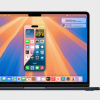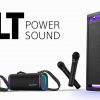How many people does it really take to operate one of the most popular high-res capable music streaming platforms? According to Jack Dorsey, CEO of Block (majority owner of Tidal) — as few as humanly possible. A second mass layoff is coming to the hi-res music streaming platform in less than 12 months and there is speculation from within the company that the latest round of layoffs might include as many as 100 employees, This would amount to almost twenty-five percent of its workforce. TIDAL does not appear to be in good shape.
Just how bad are things at TIDAL?
According to the note which was viewed by Fortune‘s Kali Hays, Dorsey, the former CEO of Twitter, informed the music streaming platform’s staff on Wednesday that they would have to run the company “like a startup again.”
This requires organizations across the company to operate with a “much smaller team,” Dorsey explained.
“So we’re going to part ways with a number of folks on our team,” Dorsey explained in the note. “We’re going to lead with engineering and design, and remove the product management and product marketing functions entirely. We’re reducing the size of our design team and foundational roles supporting TIDAL, and we will consider reducing engineering over the next few weeks as we have more clarity around leadership going forward.”
In December 2023, Dorsey announced a 10% cut of TIDAL’s staff, and it was announced in July 2024 that it a complete reorganization of the company was likely.
A TIDAL spokesperson said in a statement to Fortune: “We have made some internal changes to our TIDAL team to focus on serving artists in the most meaningful way. This involved the elimination of some roles across our business and design teams. We are going to be smaller, focus on fewer things, and move with a relentless approach to product development.”

For those with short memories, Block acquired a majority share in TIDAL from Jay-Z in 2021 for close to $300 million. The rap/hip-hop mogul finally extricated himself from his TIDAL nightmare by selling a majority ownership overnight to Square. The same company owned by former Twitter CEO, Jack Dorsey.
At the time of the original purchase by Jay-Z and a group of other artists in 2015, there was a belief that the acquisition was done because of a strong conviction that artists should be paid fairly for their songs, especially considering the outsized importance that music holds in all our lives.
The 2021 acquisition was heralded as a great moment for musicians who would finally be paid proper compensation for their music, and an even better moment for audiophiles who had supported the hi-res platform from launch and could now sleep better at night knowing that their money and loyalty had not been wasted.
Spotify, with more than 300 million subscribers, could continue to be the evil empire and not compensate artists properly, but TIDAL would set an example for every other streaming platform.
TIDAL launched direct artist payouts; an innovative program that gives artists access to another payment stream by allocating 10% of monthly subscriptions at the HiFi Plus tier to each listener’s most streamed artist.
The goal was to create a sustainable, artist-first business model for the music industry.
A rather laudable goal — as long as everyone is actually making money.
Questionable Decisions?
We have covered the TIDAL/MQA saga since 2020 and there is no question that it was not a successful partnership. The decision to add support for millions of Hi-Res MQA tracks was treated like a watershed moment for the platform and those in the consumer A/V press who treated it like the most important moment in high-end audio look rather ridiculous today — and that was before TIDAL moved to replace the MQA files with FLAC versions in the aftermath of MQA’s financial issues and subsequent sale to Lenbrook Media Group.

Starting on July 24, 2024, TIDAL subscribers were no longer be able to access music in the MQA or Sony 360 Reality Audio (360RA) formats.
The decision to drop support for the two formats was followed by a decision to also drop support for podcasts.
According to a TIDAL Spokesperson, “Yes, it’s true. After careful consideration of relative catalog coverage, distribution frequency, and subscriber listening experiences, we decided to discontinue hosting MQA, 360 Reality Audio, and all podcasts on TIDAL. Music fans can continue to access over 110 million songs available in HiRes FLAC, FLAC, and Dolby Atmos on TIDAL for $10.99 USD (or local equivalent) on an Individual Plan.”
Qobuz Rising?
As we reported last week, rival hi-res streaming platform, Qobuz, seems to be moving in a positive direction with the announcement that it would finally be available for streaming and downloads in Japan — one the top 3 markets in the world for music consumption.

This strategic expansion marks a decisive turning point in the international development of the platform, reinforcing its trajectory towards “profitability” and its commitment to a musical experience that combines quality and discovery.
Making money would be a good thing. Spotify still can’t turn a profit with 300 million subscribers so we are all hoping to see Qobuz become profitable in a market with a lot of competition from the market leader (Spotify), TIDAL, Apple Music, Amazon Music HD, Deezer, and others.
Qobuz also finally announced its expansion into Canada and the availability of DSD/DXD hi-res files for download (purchase) through the website and app.
With so many high-end DACs (and Dongle DACs), DAPs and network players supporting DSD/DXD at this point, this decision by Qobuz to make it available through its download store makes sense. Audiophiles who have experienced the difference between DSD and PCM files will find this rather exciting, but most mainstream listeners will not. You are not using Bluetooth to transmit DSD/DXD to your Apple AirPods.
Storage and bandwidth issues will keep this an audiophile pursuit.
Will Qobuz learn from TIDAL’s mistakes and not repeat them? We certainly hope so.
The Bottom Line
The music streaming category has proven that consumers like the product and will use it — but making a profit seems to be rather difficult for some of the platforms.
Apple finds itself in a rather unique position compared to the other platforms from the perspective that it manufactures the hardware that consumers use to experience music streaming platforms and whilst the Apple experience might not be the best one — at least not according to audiophiles who are primarily concerned with sound quality — it offers the path of least resistance for the hundreds of millions of consumers around the globe that use its products on a daily basis.

Consumers seem rather content with Spotify and Apple Music. Spotify’s lossless HiFi option remains nothing more than a concept, which was announced at an expensive press conference that occurred so many years ago that few can remember the spokesperson — it was Billie Eilish. However, Apple was more than willing to take on TIDAL and Qobuz and offer something better.
Is it possible that the vast majority of listeners just don’t care about lossless audio or hi-res streaming and are unwilling to pay more for it?
TIDAL’s ownership hopes that isn’t the case.
Related Reading:
- Podcast: Interview with Dr. Mark Waldrep — Is Hi-Res Audio More Hype Than Reality?
- Podcast: Why is Streaming Audio So Complicated?
- Spotify Has Paid Out $40 Billion To The Music Industry, So Why Is No One Happy?



















































Asa
November 1, 2024 at 4:15 pm
Thanks for the update, Ian.
I’m a Tidal user and not surprised. Although, with a smaller share of listeners, eliminating product marketing seems a bit short sided. If you don’t know about Tidal now, will you in the future?
Do you think Tidal will last, or maybe jumping to Qubuz seem a logical next step? I wouldn’t be surprised if they’re shopping Tidal around for an acquisition…hence the layoffs and setting the stage for it.
TGIF
Chris Boylan
November 1, 2024 at 5:09 pm
Personally I hope Tidal sticks around as it’s only one of three major streaming services that supports Dolby Atmos music and I listen to that a lot. Apple Music and Amazon Music Unlimited also support Dolby Atmos, but I like the quality options available on Tidal. And now that they dropped the price from $19.99 (old “HiFi tier”) to $11.99/month, without cutting the quality, it’s competitive with the other services as well.
Ian White
November 1, 2024 at 7:50 pm
So I agree with Chris. It would be a huge loss if TIDAL went away. Not only for the technical reasons, but because I have invested over 6 years building out my TIDAL library with thousands of albums and almost 100 custom playlists. I use it every day. I also use Qobuz but TIDAL was my choice over Spotify, Apple, and Amazon.
It would also make me angry having spent a lot of money on my subscription to lose it. All of this goes back to something we talked about on our “streaming” podcast. You don’t own the music. You rent it. And if the company goes out of business…you have nothing to show for it.
Physical media remains relevant for this reason.
Ian White
brant thomas
November 3, 2024 at 12:52 pm
Regarding the second to last sentence: an awful lot of people love eating at McDonalds, too. Those that do, do not care one bit that they are eating crap.
Ian White
November 3, 2024 at 8:24 pm
Brant,
They even ruined the fries. Sigh.
Consumers almost always pick the path of least resistance and care more about access and convenience than anything else. The ability to store “endless” MP3s on our devices was not a good thing. Consumers cared more about having access to everything than what would be “best” for them — which in our world, is the best sound quality.
TIDAL’s financial issues are not a good thing for the hi-res streaming category. We’ve always wondered if the market could support TIDAL, Qobuz, Deezer, Spotify, Amazon Music HD, and Apple Music — and we’re starting to see that even a lower cost is not enough to entice consumers.
If you don’t care about sound quality — why would you need any hi-res streaming service?
IW
Picklgreen
November 3, 2024 at 2:54 pm
I stopped using Tidal when they discontinued the veteran discount. Unamerican greedy fuks! RIP Tidal.
Asa
November 3, 2024 at 10:50 pm
Thanks for the replies, Ian/Chris, and the rest. I’ll keep following Qobuz for a while and see where they land. Not a fan of Dorsey and his time @ Twitter/X, and I hope he steers the Tidal ship to better waters. I was happy to see they lowered the price of their service.
We’ve been going through all our subscription services this weekend and paring back to only what is needed and/or what provides some joy in our lives. Tidal stays afloat. To your points, I suppose people won’t wake up until things go completly haywire and realize the meaning of rent vs own.
AB